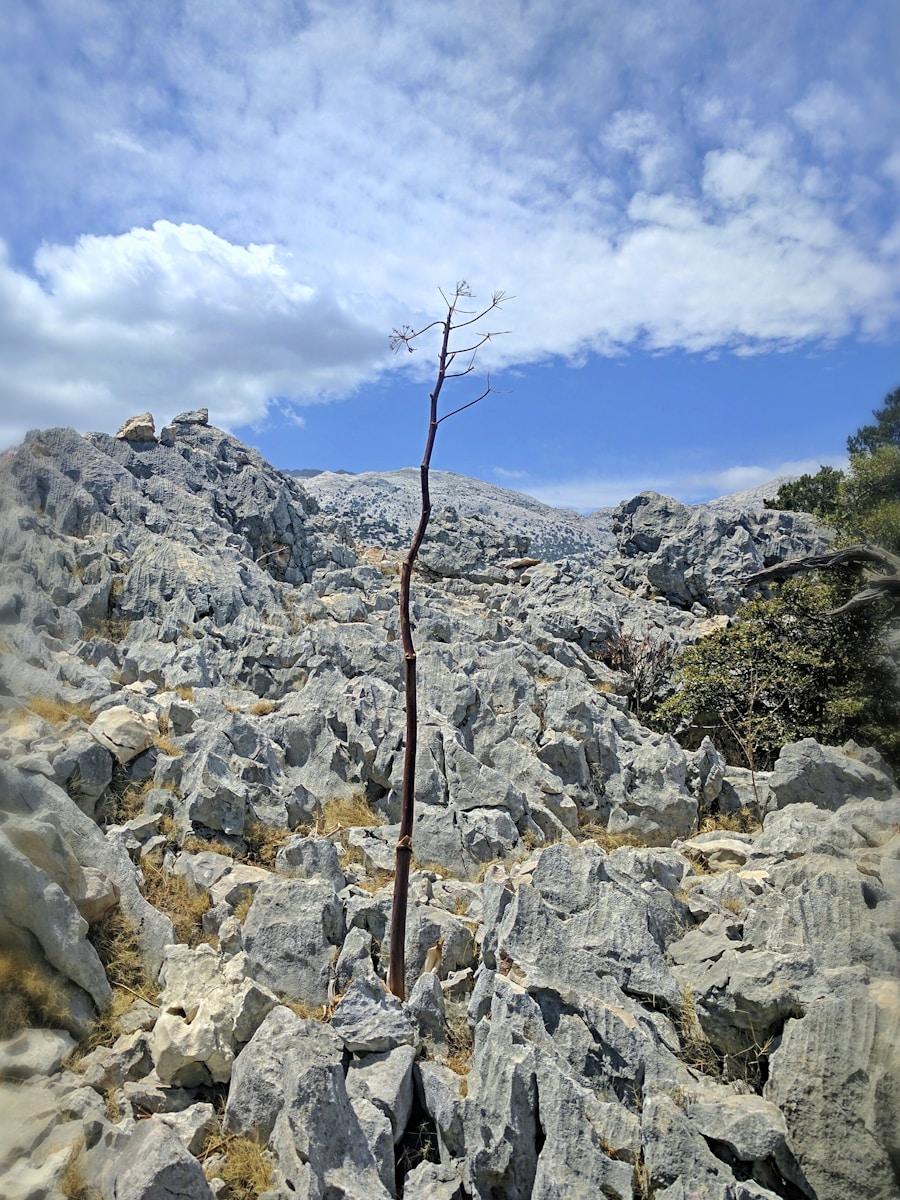Hiking sticks, often referred to as trekking poles or walking sticks, have become an essential accessory for outdoor enthusiasts and casual walkers alike. These tools, which have been used for centuries, serve a variety of purposes that enhance the hiking experience. Traditionally made from wood, modern hiking sticks are typically constructed from lightweight materials such as aluminum or carbon fiber, making them both durable and easy to carry.
The design of these sticks has evolved significantly, with many now featuring adjustable lengths, ergonomic grips, and shock-absorbing mechanisms. This evolution reflects a growing understanding of the benefits that hiking sticks can provide, not only in terms of physical support but also in enhancing the overall hiking experience. The resurgence in the popularity of hiking sticks can be attributed to a combination of factors, including increased awareness of their benefits and the rise of outdoor recreational activities.
As more people seek to explore nature, the demand for equipment that enhances safety and comfort has surged. Hiking sticks are particularly appealing because they cater to a wide range of users, from seasoned trekkers tackling challenging terrains to families enjoying leisurely walks in local parks. The versatility of hiking sticks makes them an attractive option for anyone looking to improve their outdoor adventures.
Key Takeaways
- Hiking sticks are a valuable tool for hikers, providing stability and support on various terrains.
- Using hiking sticks can help reduce the impact on joints and muscles, making it easier to hike for longer periods of time.
- Hiking sticks can also improve posture and balance, leading to a more comfortable and efficient hiking experience.
- When choosing a hiking stick, consider factors such as material, weight, and grip to ensure the best fit for your needs.
- Proper technique is important when using hiking sticks, including adjusting the length and using them to support your weight while walking.
The Physical Benefits of Using Hiking Sticks
One of the most significant advantages of using hiking sticks is the physical support they provide. When traversing uneven terrain, these sticks can help distribute weight more evenly across the body, reducing strain on the legs and joints. This is particularly beneficial for individuals with knee issues or those recovering from injuries.
By providing additional stability, hiking sticks can help prevent falls and slips, which are common hazards on rocky or slippery trails. The use of trekking poles can also engage the upper body muscles, allowing for a more balanced workout that incorporates both the arms and legs. Research has shown that using hiking sticks can lead to improved endurance and reduced fatigue during long hikes.
A study published in the Journal of Sports Sciences found that participants who used trekking poles experienced lower heart rates and perceived exertion levels compared to those who hiked without them. This means that hikers can cover greater distances with less effort, making it easier to enjoy longer excursions without succumbing to exhaustion. Additionally, the rhythmic motion of using hiking sticks can enhance coordination and balance, further contributing to a more enjoyable hiking experience.
The Mental and Emotional Benefits of Using Hiking Sticks

Beyond the physical advantages, hiking sticks also offer significant mental and emotional benefits. The act of hiking itself is known to reduce stress and promote mental well-being, but the use of trekking poles can amplify these effects. By providing a sense of security and stability, hiking sticks can help alleviate anxiety associated with navigating challenging trails.
This added confidence allows hikers to immerse themselves more fully in their surroundings, fostering a deeper connection with nature. Moreover, the rhythmic motion of using hiking sticks can have a meditative quality, promoting mindfulness during hikes. As hikers focus on their movements and the terrain ahead, they may find themselves more present in the moment, leading to a greater appreciation for the beauty around them.
This mindfulness can translate into improved mood and emotional resilience, making hiking not just a physical activity but also a therapeutic one. Engaging with nature while using hiking sticks can create a sense of peace and tranquility that is often hard to find in our fast-paced lives.
How to Choose the Right Hiking Stick for You
| Feature | Criteria | Importance |
|---|---|---|
| Material | Aluminum, Carbon Fiber, Wood | High |
| Weight | Less than 1 lb | High |
| Grip | Ergonomic, Padded, Adjustable | Medium |
| Shock Absorption | Spring-loaded, Anti-shock system | Medium |
| Length | Adjustable, Fixed | High |
| Tip | Rubber, Carbide, Steel | Medium |
Selecting the right hiking stick is crucial for maximizing its benefits. When choosing a trekking pole, consider factors such as height, weight, material, and features. Adjustable poles are often recommended as they allow users to customize the length based on their height and the terrain they are navigating.
A general guideline is that when standing upright with the pole, your elbow should form a 90-degree angle. This ensures optimal comfort and efficiency while hiking. Material is another important consideration.
Aluminum poles are typically more affordable and durable but may be heavier than their carbon fiber counterparts. Carbon fiber poles are lighter and absorb shock better but come at a higher price point. Additionally, look for features such as ergonomic grips that fit comfortably in your hand and shock-absorbing mechanisms that reduce impact on your joints during descents.
Some poles even come with interchangeable tips for different terrains, allowing for versatility in various hiking conditions.
Tips for Using Hiking Sticks Properly
To maximize the benefits of hiking sticks, proper usage techniques are essential. When walking with trekking poles, it’s important to maintain a natural arm swing that complements your stride. The poles should be planted slightly ahead of you as you step forward, allowing for a smooth transfer of weight from your legs to your arms.
This technique not only enhances stability but also helps engage your upper body muscles effectively. Another key aspect is adjusting the length of your poles based on the terrain. For uphill sections, shortening the poles can help maintain an efficient stride and reduce strain on your back.
Conversely, lengthening them during downhill stretches provides better leverage and control. Practicing these adjustments will help you become more adept at using your hiking sticks effectively, ultimately enhancing your overall hiking experience.
Safety Precautions When Using Hiking Sticks

While hiking sticks can significantly improve safety on trails, it’s important to be aware of certain precautions to ensure their effective use. One common mistake is relying too heavily on the poles for balance while neglecting foot placement. It’s crucial to remain attentive to where you place your feet, as missteps can lead to falls regardless of how stable you feel with your trekking poles.
Additionally, be mindful of your surroundings when using hiking sticks in crowded or narrow trails. Swinging your poles too widely can inadvertently strike other hikers or obstacles along the path. Practicing good trail etiquette by keeping your poles close when passing others will help maintain a safe environment for everyone on the trail.
Lastly, always check your equipment before heading out; ensuring that your poles are in good condition will prevent any unexpected failures during your hike.
Environmental Benefits of Using Hiking Sticks
Hiking sticks not only benefit individual hikers but also contribute positively to environmental conservation efforts. By promoting sustainable practices in outdoor recreation, trekking poles encourage hikers to tread lightly on trails and minimize their impact on natural ecosystems. When used correctly, hiking sticks can help reduce soil erosion by providing stability on fragile terrains, particularly in areas prone to degradation.
Moreover, many manufacturers are now producing eco-friendly trekking poles made from sustainable materials or utilizing environmentally responsible production methods. By choosing these products, hikers can support companies that prioritize sustainability while enjoying their outdoor adventures. This conscious choice reflects a growing trend among outdoor enthusiasts who recognize the importance of preserving natural spaces for future generations.
Embracing the Benefits of Hiking Sticks
Incorporating hiking sticks into your outdoor activities can significantly enhance both your physical performance and mental well-being while exploring nature’s beauty. From providing stability and reducing fatigue to fostering mindfulness and emotional resilience, these tools offer a multitude of benefits that cater to hikers of all levels. By understanding how to choose the right stick and use it effectively while adhering to safety precautions, you can maximize your enjoyment on the trails.
As you embark on your next adventure, consider embracing the advantages that hiking sticks bring to your experience. Whether you’re navigating steep inclines or leisurely strolling through serene landscapes, these versatile tools can transform your approach to hiking and deepen your connection with nature. With each step taken alongside your trusty trekking poles, you’ll not only enhance your physical capabilities but also cultivate a greater appreciation for the world around you.
If you’re planning a hiking trip and wondering what hiking sticks are for, you may also be interested in learning about the importance of having the right travel adapters for your electronic devices while traveling. Check out this article on 5 Must-Have Universal Travel Adapters for Your Spring 2025 Adventures to ensure you stay connected and powered up during your outdoor excursions.
Love travel? Join Our Facebook Community For More Tips.
FAQs
What are hiking sticks used for?
Hiking sticks are used to provide stability and support while hiking on uneven terrain. They can help to reduce the strain on the knees and joints, improve balance, and provide additional propulsion when walking uphill.
How do hiking sticks work?
Hiking sticks work by transferring some of the weight and impact from the legs to the arms and shoulders. They also help to widen the base of support, providing better balance and stability on rough or slippery terrain.
Are hiking sticks necessary?
Hiking sticks are not necessary for all hikers, but they can be beneficial, especially for those with knee or joint issues, or for hiking on challenging terrain. They can also be helpful for carrying a heavy backpack.
What are the benefits of using hiking sticks?
The benefits of using hiking sticks include reduced strain on the knees and joints, improved balance and stability, increased propulsion when walking uphill, and the ability to test the stability of uncertain terrain.
How do I choose the right hiking sticks?
When choosing hiking sticks, consider factors such as weight, material, grip, and adjustability. It’s important to select sticks that are comfortable to hold and provide the right amount of support for your hiking needs.
